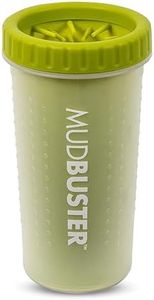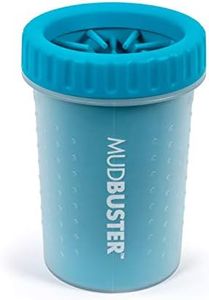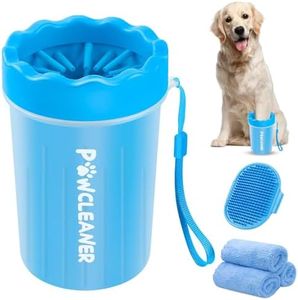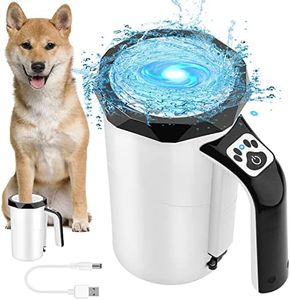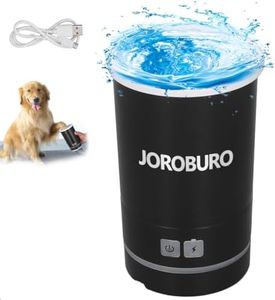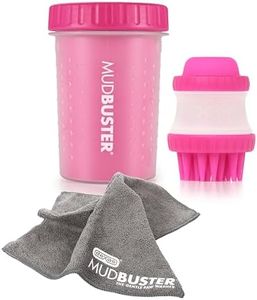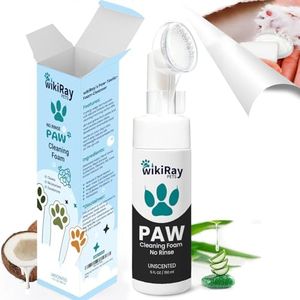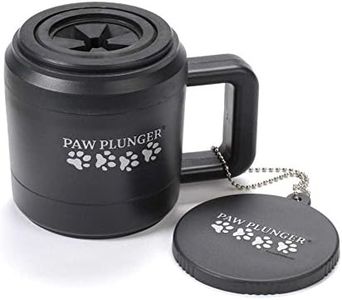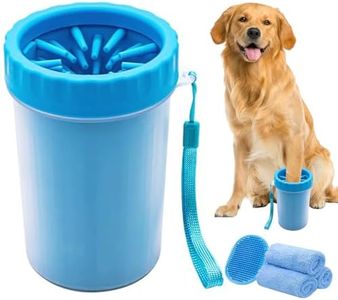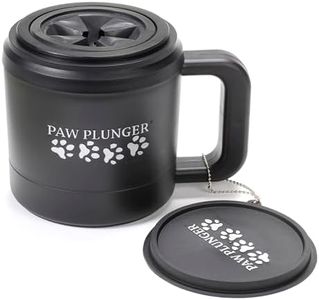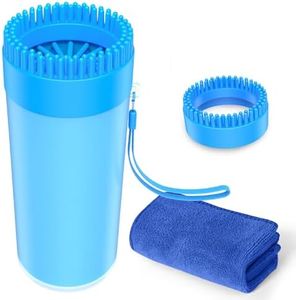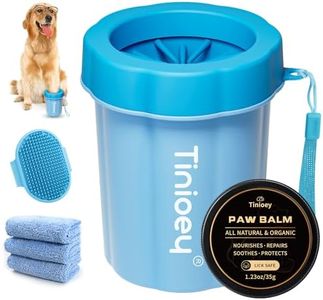We Use CookiesWe use cookies to enhance the security, performance,
functionality and for analytical and promotional activities. By continuing to browse this site you
are agreeing to our privacy policy
10 Best Dog Paw Cleaners
From leading brands and best sellers available on the web.Buying Guide for the Best Dog Paw Cleaners
Choosing the right dog paw cleaner can make cleaning your pet's paws after walks much easier and more effective, keeping your home cleaner and protecting your dog's health. It's important to pick a paw cleaner that fits your dog's size, is easy to use, and meets your lifestyle — whether that's quick spot cleaning after a walk or more thorough washing after muddy outings. Understanding the main features of dog paw cleaners will help you make a choice that suits both you and your dog.Size and CapacityThe size and capacity of a paw cleaner refer to how large the cleaning chamber is and whether it's suitable for your dog's paw size. This is important because a paw cleaner that's too small won't fit your dog's paw comfortably, while one that's too big may not clean effectively. Paw cleaners are usually labeled for small, medium, or large dogs, but also check the actual dimensions or paw size recommendations. Pick a paw cleaner that matches your dog's paw size – generally, smaller cleaners are for toy and small breeds, medium for the average dog, and large for big breeds. Measure your dog's paw width and compare it to the product recommendations to ensure a good fit.
Type of Cleaning MechanismPaw cleaners come in different types: some use soft silicone bristles, others use cloth or gentle sponges, and a few are basic cups that just use water. The cleaning mechanism matters because it determines how thoroughly and comfortably the device will clean. Silicone bristles are soft and flexible, gently removing dirt, while sponges are good for sensitive paws. Think about your dog's tolerance and the typical mess level. For daily, light dirt, gentle mechanisms are fine. For more intense mud or larger dogs, pick a cleaner with robust bristles.
Ease of Use and CleaningHow easy it is to use and clean the paw cleaner will affect how often you actually use it. This includes how simple it is to insert your dog's paw, work the cleaner, and then rinse or dry both the cleaner and your dog’s paws after use. Some models can be operated with one hand, while others might need two. Think about your dog's behavior—if they're patient, any design could work; for wiggly dogs, a quick, simple device is better. Also, consider how the device comes apart for washing; cleaners that can be disassembled and machine-washed or rinsed easily are the most practical.
PortabilityPortability refers to how easy the paw cleaner is to carry and use on-the-go. Some are collapsible or lightweight, designed for travel, hikes, or the park, while others are bulkier and better as a fixed home solution. If you often walk your dog in dirty areas away from home, a portable option is key; for backyard and front-door cleaning, a sturdier, larger cleaner can stay by the door. Think about where you'll use the cleaner most often to decide what level of portability you need.
Material and DurabilityThe material a paw cleaner is made from (like plastic, silicone, or rubber) affects not only how long it will last, but also how comfortable it is for your dog and how easy it is to clean. High-quality materials are more durable and less likely to crack or break, especially if you have a large dog. Make sure the material is non-toxic and safe for pets. Durable cleaners will withstand repeated use, especially if your dog often gets very dirty paws.
